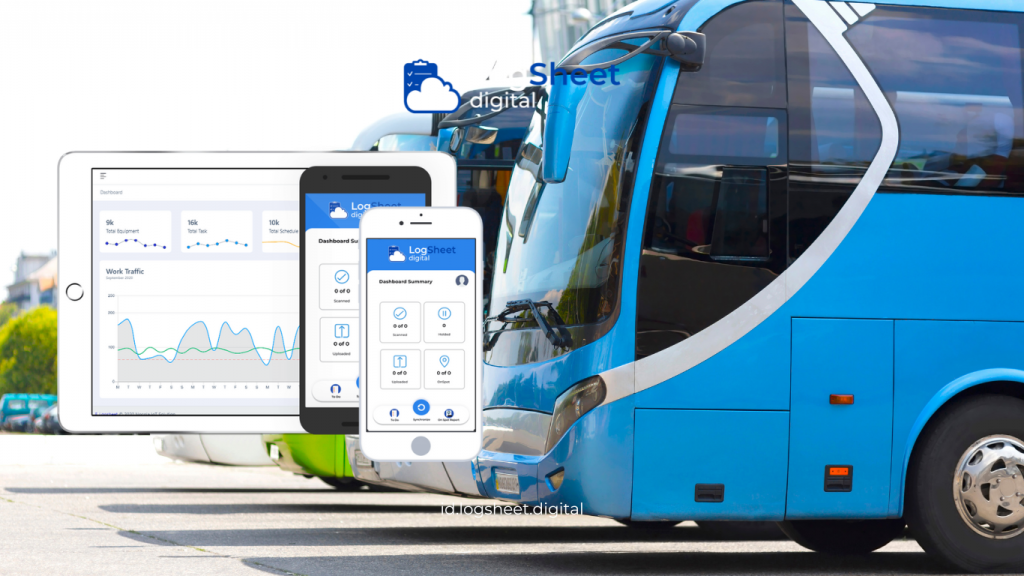In the era of globalization and rapid technological advancement, the logistics world faces various challenges. One of the main challenges is ensuring the certainty of goods delivery to customers. Delays in shipments, errors in recording, and inefficient inventory management can harm companies. To address these issues, many companies are starting to switch to digital solutions, including the implementation of digital log sheets. This article will discuss the advantages of digital logsheets in logistics, as well as their impact on improving delivery certainty.
What Are Digital Logsheets?

Read More: Data Security in Digital Log Sheets: Challenges and Solutions
Digital log sheets are software-based applications or systems used to record and manage information related to logistics operations. Unlike manual log sheets that use paper, digital log sheets allow for real-time data recording and easy access through digital devices. With advanced features, digital log sheets can collect, analyze, and present data to enhance efficiency and accuracy in logistics operations.
Advantages of Digital Logsheets in Warehousing and Logistics

Read More: Data Security in Digital Log Sheets: Challenges and Security Strategies
1. Improved Data Accuracy
One of the main advantages of digital log sheets is their ability to improve data accuracy. Manual recording is often prone to errors, either due to human negligence or system limitations. With digital log sheets, data can be automatically recorded and updated directly in the system. This reduces the risk of errors and ensures that the available information is accurate and up-to-date.
2. Real-Time Monitoring
Digital log sheets enable real-time monitoring of logistics processes, including shipment status, inventory, and vehicle conditions. This information can be accessed anytime and anywhere through mobile devices or computers. With real-time monitoring, logistics managers can quickly identify emerging issues and take necessary actions. This helps improve delivery certainty by reducing response times to potential problems.
3. Better Inventory Management
Inventory management is a crucial aspect of logistics. Digital log sheets allow companies to accurately and efficiently monitor stock levels. With an automated system, companies can know how many items are available, when to reorder, and minimize the risk of stockouts. Good inventory management contributes to delivery certainty, as companies can ensure that goods are always available when needed.
4. Process Efficiency
The implementation of digital log sheets in warehousing and logistics can enhance overall process efficiency. The automatic recording and processing of data reduce the time needed to complete administrative tasks. Employees can focus on more strategic and value-added tasks, such as planning shipments and improving customer service. With higher efficiency, companies can better meet delivery deadlines.
5. In-Depth Data Analysis
Digital log sheets provide analytical tools that allow companies to delve deeper into their operations. The collected data can be analyzed to identify patterns, trends, and areas for improvement. For instance, companies can analyze delivery times, customer satisfaction levels, and operational costs. With this information, companies can make better decisions to enhance delivery certainty.
6. Integration with Other Systems
One of the advantages of digital log sheets is their ability to integrate with other systems used in logistics, such as Warehouse Management Systems (WMS), Transportation Management Systems (TMS), and ERP software. This integration allows for a smooth flow of information between systems, reducing redundancy and enhancing collaboration. With integrated systems, companies can improve efficiency and delivery certainty.
7. Enhanced Communication and Collaboration
Digital log sheets facilitate better communication among various stakeholders in the supply chain. All parties involved, from drivers to warehouse managers, can access the same information in real-time. This helps reduce miscommunication and ensures that everyone works with accurate information. Improved collaboration contributes to better delivery certainty.
8. Reduction in Operational Costs
The implementation of digital log sheets can help companies reduce operational costs. By enhancing efficiency and minimizing errors, companies can save time and resources. Additionally, better inventory management helps reduce storage costs and avoid waste. By cutting costs, companies can improve profitability and allocate resources to enhance delivery services.
Case Study: Implementation of Digital Logsheets in a Logistics Company

Read More: Enhancing Industry Safety Through Digital Log Sheets on Safety Equipment
To provide a clearer picture of the advantages of digital log sheets, let’s look at a case study on the implementation of digital log sheets in a logistics company.
Company Profile: XYZ Logistics
XYZ Logistics is a logistics company specializing in intercity goods delivery. Before implementing digital log sheets, this company faced various challenges, including errors in shipment recording, delays, and inefficient inventory management.
Implementation of Digital Log Sheets
After implementing digital log sheets, XYZ Logistics was able to overcome many of these challenges. Here are some results achieved:
- Improved Delivery Accuracy: With an automatic recording system, errors in shipments significantly decreased. Accurate data helped avoid incorrect deliveries.
- Real-Time Monitoring: Logistics managers could monitor shipment status in real-time. This allowed them to respond immediately to any delays.
- Efficient Inventory Management: XYZ Logistics could accurately monitor stock levels. This helped ensure that goods were always available for delivery.
- Increased Customer Satisfaction: With better delivery certainty, customer satisfaction levels increased. Customers felt more confident knowing when their goods would arrive.
Challenges of Implementing Digital Logsheets

Read More: The Importance of Digital Patrol Checks for Warehouse Safety
Although digital log sheets offer many advantages, there are several challenges to consider in their implementation:
1. Initial Investment
The implementation of digital log sheets requires significant initial investment. Companies must purchase hardware, software, and train employees. While these costs can be considered a long-term investment, some companies may struggle to allocate the budget.
2. Organizational Culture Change
Transitioning from a manual system to a digital system requires a change in organizational culture. Employees may find it difficult to adapt to new technology. Therefore, proper training and management support are crucial to facilitate this transition.
3. Dependence on Technology
The implementation of digital log sheets makes companies more dependent on technology. If technical disruptions or system failures occur, it can hinder logistics operations. Therefore, companies must have backup plans and proper system maintenance.
Conclusion

The implementation of digital log sheets in warehousing and logistics provides significant advantages, particularly in enhancing delivery certainty. With better data accuracy, real-time monitoring, and efficient inventory management, companies can reduce operational costs and improve customer satisfaction. Despite the challenges in its implementation, the long-term benefits of digital log sheets make them a valuable investment for logistics companies. By adopting this technology, companies can operate more efficiently and remain competitive in the ever-evolving logistics industry.






comments (0)